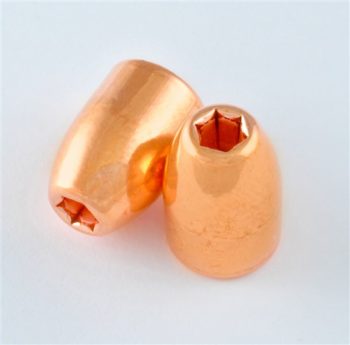Explanation:
When accepting a firearm from another person, it's important to ensure safety at every step. This includes visually checking the chamber and magazine, keeping the muzzle pointed in a safe direction, thanking the person, and then verifying the firearm's safety through the PROVE acronym (Point, Remove, Observe, Verify, Examine). These steps help prevent accidents and ensure safe handling of the firearm.
Explanation:
Barrel stamp – A stamp pressed into the side of the barrel of a firearm that typically states the manufacturer, the gauge or caliber, and the chamber size."
Explanation:
It ensures that the shooter will have a clear view of the target with the correct sight alignment before firing away.
Explanation:
Shotgun ammunition is called a shot shell. Shotgun ammo is typically broken down into three categories: birdshot, buckshot, and slugs. A shot shell consists of a cylindrical casing filled with metallic pellets.

Explanation:
Some jacketed hollow points will look just like traditional hollow points but will be obviously coated. Others will have a more advanced and high-tech appearance. The nose is coated in a harder metal, helping prevent lead issues in your gun as well as the air and ground.
Explanation:
Using the wrong ammo could damage your gun and prevent it from working. If this happens, you’ll need to have your handgun repaired. However, some damage is beyond repair, and you’ll have to purchase a new firearm. Ammunition needs to fit the chamber for the gun to operate correctly and reduce maintenance issues.
Explanation:
When choosing an ammo storage location, shoot for dark, dry, and cool — not cold. A closet inside a home is ideal. I would, however, avoid extremes such as basement storage or storing ammo in the attic. Normal fluctuations in household temperatures are OK.
Advertisement
Explanation:
The easiest way to tell them apart is to see if you can see a circular primer in the center at the base of the casing. The primer in the center = centerfire! If you see a smaller cartridge with no overt primer, it is likely rimfire.
Explanation:
Generally, tubular magazines must use flat-point or round-nose bullets.
Explanation:
Rifles and handguns typically use cartridges, which contain a single projectile (bullet) along with other components such as the casing, primer, and powder. This term is specific to ammunition used in firearms that fire a single projectile per shot, distinguishing it from shotshells used in shotguns, which contain multiple projectiles (shot).
Explanation:
Always Keep the Muzzle Pointed in a Safe Direction. This is the most basic safety rule. If everyone handled a firearm so carefully that the muzzle never pointed at something they didn’t intend to shoot, there would be virtually no firearm accidents.